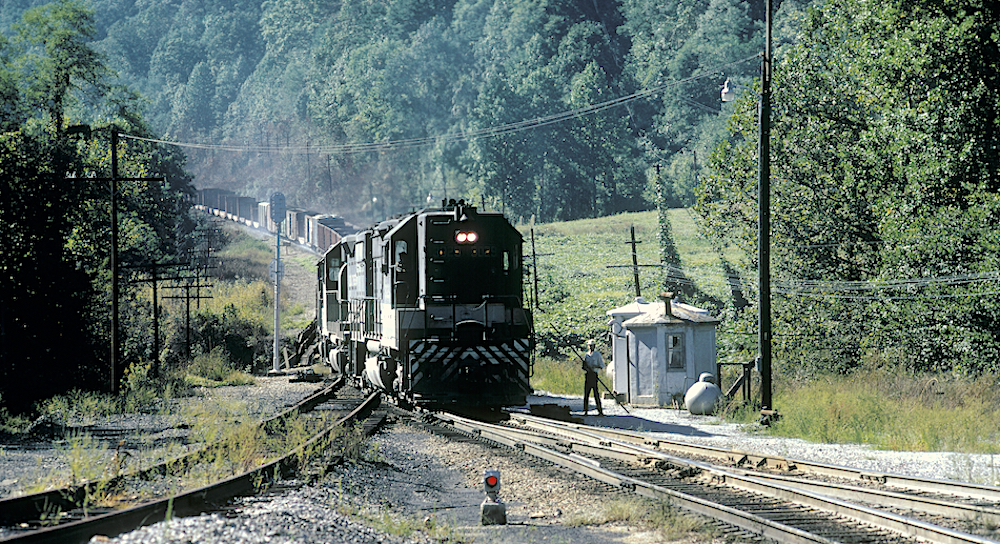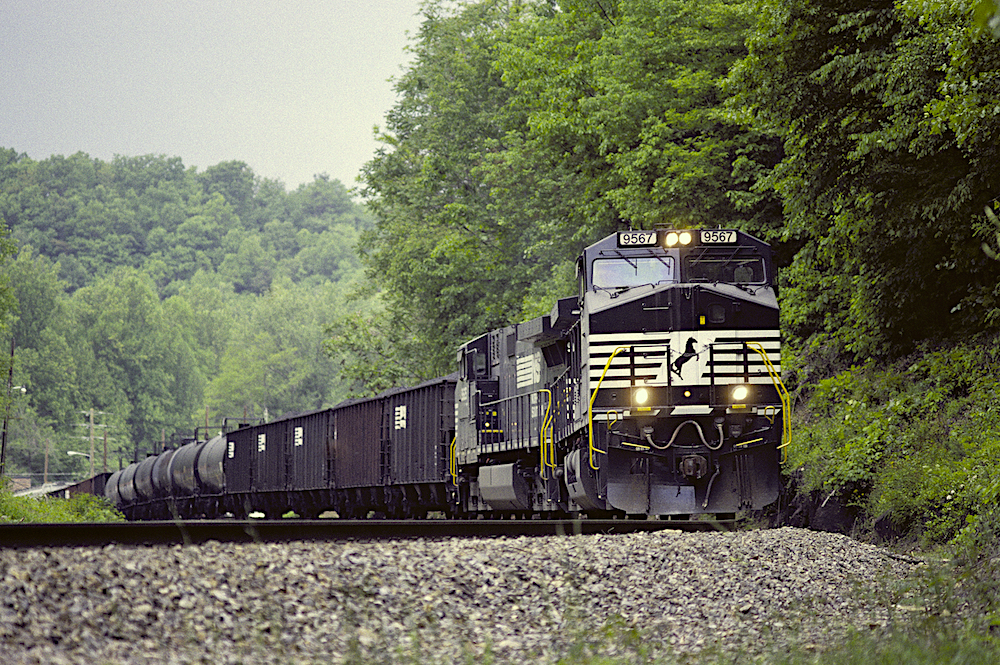Saluda Grade

The famous Saluda Grade in western North Carolina has seen its last train. Railbanked in December 2001, nature has slowly but surely reclaimed the right-of-way. Now, in 2023, an agreement has been reached to sell the railroad to become a hiking trail. Let’s look back at the years when Norfolk Southern operated the nation’s steepest mainline railroad.
The beginnings of Saluda date to the late 1800s when railroad builders aiming for Asheville and beyond were confronted with the eastern slope of the Blue Ridge Mountains. Several surveys of different routes were made, but the final choice, no doubt at least partially driven by finances, was that the best way to get over the mountain was a basically straight-line climb from Melrose to Saluda. Completed in 1886, the Asheville & Spartanburg provided a direct path for tourists coming to the mountains and for freight heading to the South Carolina ports.
The challenges with Saluda began almost immediately. The grade officially rings in at 4.7%, which is incredibly steep for a railroad. Yet, the Saluda line is one of three former Southern Railway routes in the North Carolina mountains with grades in excess of 4%, so the idea of railroading on super steep slopes isn’t as uncommon as it might seem to the casual observer.
The other two 4-percenters, Red Marble Grade and Balsam Mountain, are on the Murphy Branch running west of Asheville, N.C. While Red Marble, part of the Great Smoky Mountains Railroad, is now out of service, Balsam Mountain still sees regular freight movements courtesy of short line Blue Ridge Southern.
The difference between the routes is that of the three 4% climbs, Saluda is by far the straightest and therefore the most prone to runaways. There were so many runaway trains in the early days that something had to be done. The solution was to install two safety tracks on the mountain. In later years, a road foreman of engines was required to take each train down the mountain — an expensive operating proposition, to say the least.

Operationally, the challenges of getting trains safely down the mountain were met with equal challenges with how to get them up the mountain. The grade was so steep that couplers would break apart under the heavy strain. The compromise was to cut the trains into sections at the bottom, make up to three trips over the hill, and then recombine everything at the top. Needless to say, this time-consuming and expensive operation was a main reason for the line’s eventual closure. But from the fan perspective, the show was spectacular.
Several excursions operated over Saluda during the final years. Famed Norfolk & Western 4-8-4 No. 611 made several trips in the early 1990s. The final passenger excursion over Saluda operated in 1996 as part of the National Railway Historical Society’s annual convention.
Not long after that, the rails over Saluda became silent and were soon overgrown. In the years since, several washouts left rails suspended in mid-air. Saluda has seen its last train. Soon, the rails themselves will be removed in hopes tourists will find ample hiking and biking opportunities on what was the nation’s steepest class I mainline railroad grade.
Watch trains in action over the grade in the Trains Trackside | Norfolk Southern’s Saluda Grade video, exclusively on Trains.com Video!














I am okay with the idea of turning old rails into tail trails , I am not a big fan of turning most Abandoned rails into tail trails as a sign our infrastructure involving commute for passengers from one town to another is transformed into a slower mode of transportation. To re build rail and railroad cost millions . And I prefer the rails be kept in place alongside a tail nearby . So we can maintain rail services in U.S.A. Rail trails , you don’t even know it was once a railroad unless someone tells you . However amidst my negativity toward cookie cutter Vegan bike riders , a rail trails is better then nothing at all . Thanks , FurthermoreJack YT .
Some years ago I corresponded with a fellow trucker who was from that area (I believe his name was CC McCall). He actually wrote a small piece for Trains that gave a great description of watching a train ascend at the summit: it was as if the lead unit was climbing over a wall. Never got to that area in time to see that for myself, but it must have been spectacular, even in the diesel era.
There is a YouTube video of the 611 coming up the grade in the 90’s into the town of Saluda. The grade goes right through town, past the local movie theater.
I believe the runaway track at Melrose was added the National Register of Historic Place so it should be preserved adjacent to any trail.
I believe there are between 5-8 washouts now. It will take quite a lot of work just to make the trail passable and keep the washouts at bay. with the grades they way they are, it will take a while to bike up them. Better have VERY good brakes comin down!!! I hope somebody makes this a great place to visit!!
This line requiring so much special handling is what killed it. In todays extra long trains this line would only make things worse. It great to hear it will be preserved as a hiking-biking trail so at least it’s history will be preserved.
Trains put together a detailed, photo-rich article on Saluda around 1985. A must-read. Sad to see this go. Perhaps one track could be left to show history.